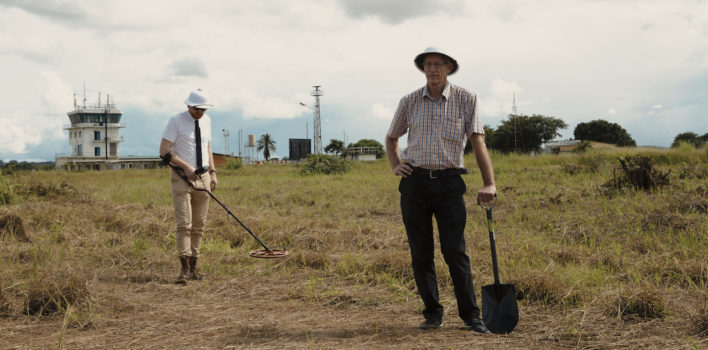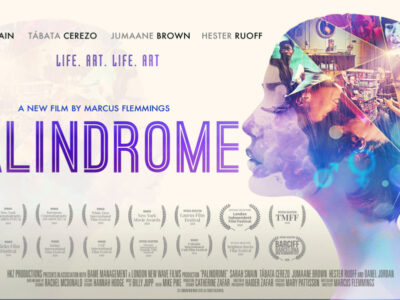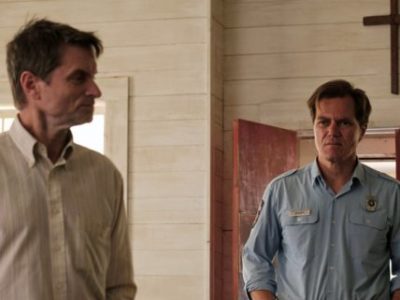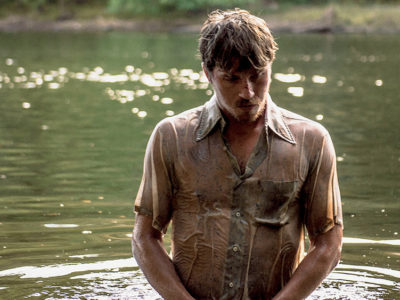Review| Cold Case Hammarskjöld (2019)
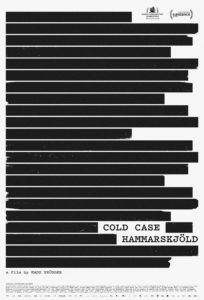 Conspiracies are a thriving industry in the entertainment world, not to mention the seedy underbellies of the Internet. As meaning-making creatures, it is sometimes easy for us to over-reach to connect dots, trying to connect “7” to “13” on a totally different picture. The entertainment quality of this is understandable. It recalls the desires of ancients to believe in something that is bigger, more transcendent, than them. Even if the conspiracy is nefarious at its core, it still promotes something outside of the individual. It begs our attention and asks for our belief even if some chasms must be crossed in order to make it a consistent belief system. There are those that believe in the puppeteering of the world via liberal Jews like George Soros—yet conveniently overlook people on their own side like Rupert Murdoch. Others believe that the Apollo 11 mission to the moon was staged by the great director Stanley Kubrick. Sometimes conspiracies create movements like the many branches of the White Nationalist Movement worldwide.
Conspiracies are a thriving industry in the entertainment world, not to mention the seedy underbellies of the Internet. As meaning-making creatures, it is sometimes easy for us to over-reach to connect dots, trying to connect “7” to “13” on a totally different picture. The entertainment quality of this is understandable. It recalls the desires of ancients to believe in something that is bigger, more transcendent, than them. Even if the conspiracy is nefarious at its core, it still promotes something outside of the individual. It begs our attention and asks for our belief even if some chasms must be crossed in order to make it a consistent belief system. There are those that believe in the puppeteering of the world via liberal Jews like George Soros—yet conveniently overlook people on their own side like Rupert Murdoch. Others believe that the Apollo 11 mission to the moon was staged by the great director Stanley Kubrick. Sometimes conspiracies create movements like the many branches of the White Nationalist Movement worldwide.
In an increasingly materialistic world where religion is being supplanted by other more empirical forms of belief, the anxiety of lost transcendence is palpable. Conspiracy theories give us a form of that satisfaction that all things work together and connect into a completed circuit. Cold Case Hammarskjöld, the new documentary by Mads Brügger, begins as a fascinating, but fairly typical true crime tale around the death of the obscure U.N. Secretary-General Dag Hammarskjöld, who served from 1953 to his death in 1961. His plane crashed in Ndola, Northern Rhodesia (now Zambia) under still-unclear circumstances. Many, including Göran Björkdahl—who accompanies Mads Brügger throughout the documentary—believe that the plane crash was intentional: that it had been shot down above Ndola in order to keep Hammarskjöld from blocking oil interests in Africa and undercutting colonial interests on the continent. Göran’s interest arose when his father gave him a metal plate that he was told came from the plane’s wreckage; the plate had small punctures in it that looked like bullet holes. The documentary sets out to solve the mystery of Hammarskjöld’s death.
 Spoiler alert: they don’t definitively solve the case. Matter of fact, they end up dropping it midway through the documentary when authorities deliver the news that the metal plate given to Göran by his father was not part of the plane wreckage and most likely came off of a Humvee. This turn in the documentary is one of the most innovative moments I have seen in the genre. Where the story goes from there makes a case that the conspiracy theories and true crime narratives that people are increasingly latching onto in this day and age are a manufactured distraction from the actual evils that pervade the world; the evils that transcend time and specificity.
Spoiler alert: they don’t definitively solve the case. Matter of fact, they end up dropping it midway through the documentary when authorities deliver the news that the metal plate given to Göran by his father was not part of the plane wreckage and most likely came off of a Humvee. This turn in the documentary is one of the most innovative moments I have seen in the genre. Where the story goes from there makes a case that the conspiracy theories and true crime narratives that people are increasingly latching onto in this day and age are a manufactured distraction from the actual evils that pervade the world; the evils that transcend time and specificity.
The way Brügger sets this reveal up is fascinating: the first images we see are of him talking to two separate African women in two separate hotel rooms, dictating how the documentary will start as it starts. These two women become perhaps the two most important characters to watch, taking down the transcript of the documentary as it moves along. Each chapter is notated by a sticky note that we see above each of the secretaries’ hotel tables. As we learn about this case, these two black women are learning along with us as they type and discuss the information with Brügger. When the reveal comes that the metal plate angle is bunk, there is an experienced break in the documentary. He discusses it with each woman to see what they think, if there is anything he is missing. Hammarskjöld could have been a significant figure in the decolonizing of Africa if he had had his way; this case would appear to have intimate consequences for these women more than anyone else featured in the documentary.
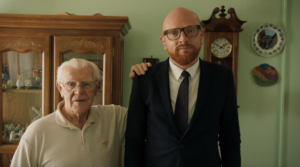 When the case falls apart, however, the truth becomes more apparent. We are then transported to The Truth and Reconciliation Commission in South Africa, which took place in 1998. Hammarskjöld’s case is brought back up at this commission knowing the potential impact his death had on the future of Africa post-1961. A document is presented at the commission from an organization called the South African Institute for Maritime Research (SAIMR) that presented an order to shoot the plane down. Brügger and Björkdahl end up trying to find out about this organization, which may or may not exist. As they begin to interview the surviving people whose names appeared on the document, and a list of recruits to the organization that they’ve happened upon, the documentary descends into a narrative that is all too well established in the world today: the various ways in which white Europeans attempt to rid the world of non-whites while taking and profiting from their land and resources. They come across the head of SAIMR, Keith Maxwell, and they happen upon potential evidence that he recruited scientists and doctors to research AIDS and his clinics were set up around Africa to inject the AIDS virus into poor black residents in the name of “vaccination” and health.
When the case falls apart, however, the truth becomes more apparent. We are then transported to The Truth and Reconciliation Commission in South Africa, which took place in 1998. Hammarskjöld’s case is brought back up at this commission knowing the potential impact his death had on the future of Africa post-1961. A document is presented at the commission from an organization called the South African Institute for Maritime Research (SAIMR) that presented an order to shoot the plane down. Brügger and Björkdahl end up trying to find out about this organization, which may or may not exist. As they begin to interview the surviving people whose names appeared on the document, and a list of recruits to the organization that they’ve happened upon, the documentary descends into a narrative that is all too well established in the world today: the various ways in which white Europeans attempt to rid the world of non-whites while taking and profiting from their land and resources. They come across the head of SAIMR, Keith Maxwell, and they happen upon potential evidence that he recruited scientists and doctors to research AIDS and his clinics were set up around Africa to inject the AIDS virus into poor black residents in the name of “vaccination” and health.
Maxwell, meanwhile, left behind a fictionalized biography of his life—names were changed, details were shifted as if he was trying to express the truth without having to confront it—which gave support to the fact that SAIMR was involved in the death of Dag Hammarskjöld. This only gave more credence to the wider story being told that SAIMR was an organization that had connections in places of power to enact their white nationalist policies of the eradication of black people in Africa. However, this institute carries a weight and fluid reputation only found by the likes of SPECTRE and other fictional creations. How much credence do we give to Maxwell’s rewriting of his own life? Are they the scribbles of a madman? Are they certifiable evidence of a grand evil organization bent on destroying African peoples? Is Brügger just introducing us into a whole new conspiratorial plot—banking on the viewer to give more weight to this one compared to the last because we’ve already seen the meta-narrative break down once already? What about the fabricated layout of the side commentary involving the African secretaries: exploitative to give us an emotional reaction to hang our hats on, or an inventive way to incorporate another voice into this larger case, sharing with the audience the weight of past actions on the lives of present day Africans? This is all up to the viewer to decipher.
 However, there is enough tangible evidence presented in the second act to give credence to the potential existence of SAIMR and its actions within the African continent during the reign of Apartheid policy. They happen upon a recruit to SAIMR who opens up about all he knows about the organization and Maxwell. He seemingly knows names that were not told to him but held importance within the scope of the documentary. He spoke out with the information because he needed “closure” and it needed to be known. The documentary made a point to tell us he moved to an undisclosed place after the release of this documentary for his and his family’s safety.
However, there is enough tangible evidence presented in the second act to give credence to the potential existence of SAIMR and its actions within the African continent during the reign of Apartheid policy. They happen upon a recruit to SAIMR who opens up about all he knows about the organization and Maxwell. He seemingly knows names that were not told to him but held importance within the scope of the documentary. He spoke out with the information because he needed “closure” and it needed to be known. The documentary made a point to tell us he moved to an undisclosed place after the release of this documentary for his and his family’s safety.
No matter what aspects of this documentary seem plausible or proven, the finer point is actually that even when we know who is in possession of the smoking gun we can’t fully know the context in which this truth has meaning without someone piecing together the evidence for us. In order for true crime, journalism, documentaries, etc. to retain meaning, we have to give ourselves over to the perspective of the person preparing the narrative, hoping that they are being as honest as possible in how they jump the chasms that are always present. How much you are brought into the story and potential truth of this documentary depends on your perception of the storyteller. Mads Brügger is not a straightforward storyteller, but he is a storyteller that seeks to illuminate meaning from a mystery that will probably never be solved.
It’s our culture’s fixation on true crime and conspiracies that is most elucidated within Cold Case Hammarskjöld. These cultural interests are shown to be a convenient means to avoid confrontation with the truths that surround us every day. We are able to always point away from ourselves: it is that person or those people or this problem that leads to the evil that lurks in the world. Yet the more we concentrate on specific cases, the less likely we become aware of the SAIMRs that might inhabit our own towns and cities. That people in our very own towns are being oppressed. That colonialism hasn’t died, only morphed into new forms to survive. That the narrative of African history could have been more in line with the fictionalized world of Wakanda, but white European interest in the land’s resources and their dislike (strengthened by both religion and science) of African peoples kept the continent from achieving its full potential. When we pull back the curtain, we may not reveal Blofeld, but instead an evil system created by banal passivity on the part of all of us.
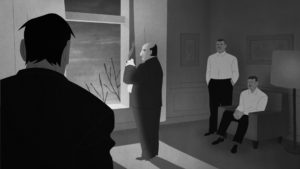 The fascination with Hammarskjöld’s death—while being an important figure in his own right—if given too much focus loses the wider, more transcendent truth about the elements of human nature that we don’t want to confront. The devil is in the details after all, and sometimes the broader picture of these conspiracies and true crime stories tells us something more important that the specifics do. Yet we avoid those aspects because they are harder to contain in our own confined narratives of how we think the story ends. The truth is too big and unwieldy to be seated in an individual’s closed system, let alone a communal or national narrative. Cold Case Hammarskjöld shows us that the narratives we tell ourselves, that guide our thoughts and ideals, are too “self”-contained, quite literally. Instead, the truth should point us outward to others who are forgotten, who suffer, who have lived within a continuous history of oppression. That’s where the story is, and the documentary’s shift from specificity to the broader, tattered edges of the truth is a remarkable feat to behold.
The fascination with Hammarskjöld’s death—while being an important figure in his own right—if given too much focus loses the wider, more transcendent truth about the elements of human nature that we don’t want to confront. The devil is in the details after all, and sometimes the broader picture of these conspiracies and true crime stories tells us something more important that the specifics do. Yet we avoid those aspects because they are harder to contain in our own confined narratives of how we think the story ends. The truth is too big and unwieldy to be seated in an individual’s closed system, let alone a communal or national narrative. Cold Case Hammarskjöld shows us that the narratives we tell ourselves, that guide our thoughts and ideals, are too “self”-contained, quite literally. Instead, the truth should point us outward to others who are forgotten, who suffer, who have lived within a continuous history of oppression. That’s where the story is, and the documentary’s shift from specificity to the broader, tattered edges of the truth is a remarkable feat to behold.


